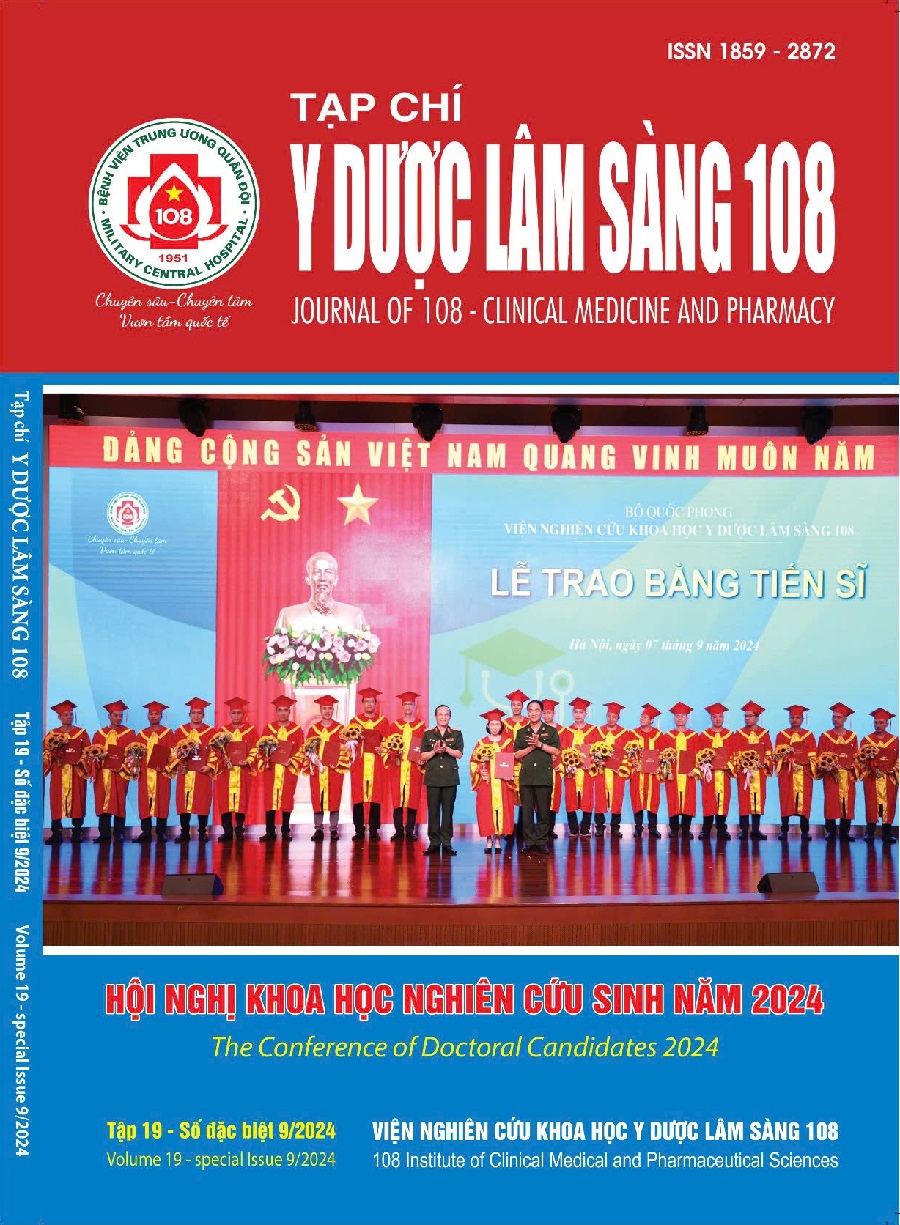Characteristics of white matter bundles of Alzheimer's patients on diffusion tensor imaging
Main Article Content
Keywords
Abstract
Objective: Investigating pathological alterations in white matter bundles in Alzheimer's patients using 3.0 Tesla diffusion tensor imaging (DTI). Subject and method: A cross-sectional descriptive study was conducted on 30 Alzheimer's patients and a control group of 30 normal individuals from November 2019 to May 2022. The investigation focused on specific white matter bundles, including the corpus callosum, fornix-hippocampus, cingulum bundle, frontal-occipital fasciculus, corticospinal tract, thalamo-cingulum bundle, and cerebellar peduncle. Result: 3D reconstructions revealed no discernible differences in the tractography of white matter fibers between Alzheimer's patients and the control group. However, many significant statistical differences were observed in the reduction of fiber count, fiber length, voxel index, FA, and ADC increase of white matter bundles. Conclusion: In Alzheimer's disease, DTI indices alterations were identified in majority of investigated white matter bundles. DTI proves to be a effective method for investigating white matter changes in Alzheimer's patients.
Article Details
References
2. Daianu M, Mendez MF, Baboyan VG, Jin Y, Melrose RJ, Jimenez EE, Thompson PM (2016) An advanced white matter tract analysis in frontotemporal dementia and early-onset Alzheimer’s disease. Brain Imaging and Behavior 10(4): 1038-1053.
3. Feng W, Halm-Lutterodt NV, Tang H, Mecum A, Mesregah MK, Ma Y, Li H, Zhang F, Wu Z, Yao E, Guo X (2020) Automated MRI-based deep learning model for detection of Alzheimer’s disease process. Int J Neural Syst 30(06): 2050032.
4. Associtaion American Psychiatric (2013) Diagnostic criteria and codes. Diagnostic and Statistical Manual of Mental Disorders.
5. Wen MC, Heng HSE, Lu Z, Xu Z, Chan LL, Tan EK, Tan LCS (2018) Differential white matter regional alterations in motor subtypes of early drug-naive Parkinson’s disease patients. Neurorehabil Neural Repair 32(2): 129-141.
6. Srivishagan S, Kumaralingam L, Thanikasalam K, Pinidiyaarachchi UAJ, Ratnarajah N; Alzheimer's Disease Neuroimaging Initiative (2023) Discriminative patterns of white matter changes in Alzheimer's. Psychiatry Research: Neuroimaging. 328: 111576.
7. Oh ME, Driever PH, Khajuria RK, Rueckriegel SM, Koustenis E, Bruhn H, Thomale UW (2017) DTI fiber tractography of cerebro-cerebellar pathways and clinical evaluation of ataxia in childhood posterior fossa tumor survivors. J Neurooncol 131(2): 267-276.
8. Sexton CE, Kalu UG, Filippini N, Mackay CE, Ebmeier KP (2011) A meta-analysis of diffusion tensor imaging in mild cognitive impairment and Alzheimer's disease. Neurobiol Aging 32(12): 2322. 5-2322.
9. Kumar S, De Luca A et al (2022) Topology of diffusion changes in corpus callosum in Alzheimer's disease: An exploratory case-control study. Front Neurol 13: 1005406.
10. Lee DY, Fletcher E, Martinez O, Zozulya N, Kim J, Tran J, Buonocore M, Carmichael O, DeCarli C (2010) Vascular and degenerative processes differentially affect regional interhemispheric connections in normal aging, mild cognitive impairment, and Alzheimer disease. Stroke 41(8): 1791-1797.
11. Damoiseaux JS, Smith SM et al (2009) White matter tract integrity in aging and Alzheimer's disease. Hum Brain Mapp 30(4): 1051-1059.
12. Magalhães TNC, Casseb RF et al (2023) Whole-brain DTI parameters associated with tau protein and hippocampal volume in Alzheimer's disease. Brain Behav 13(2): 2863.
 ISSN: 1859 - 2872
ISSN: 1859 - 2872
